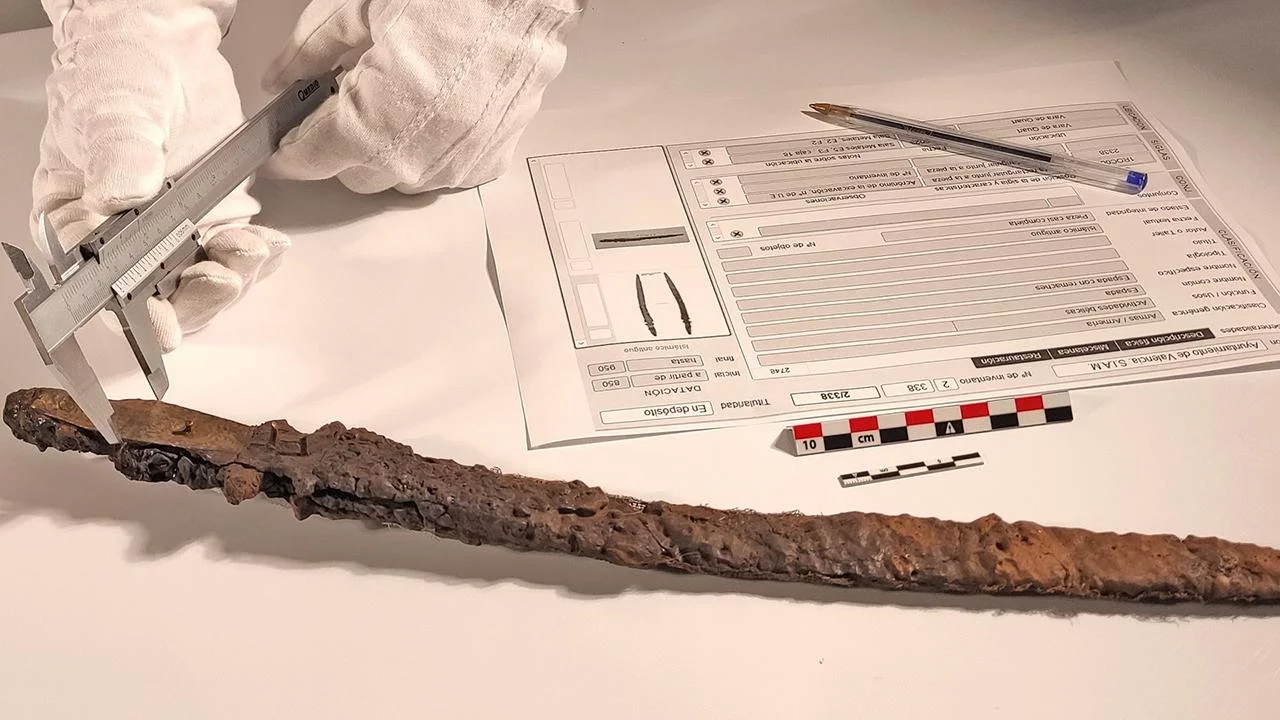In a captivating discovery reminiscent of Arthurian legend, archaeologists unearthed a remarkable artifact in Valencia, Spain—an iron sword named "Excalibur." The sword, found standing upright in the earth in 1994 at an archaeological site near Valencia's ancient Roman Forum, has now yielded its secrets as researchers unveil its storied past.
Named after the fabled sword of King Arthur, Excalibur's initial discovery sparked intrigue and speculation about its origins and significance. Situated in a region steeped in history, the site of Valencia's old town has seen the rise and fall of numerous civilizations over the centuries.
After decades of uncertainty surrounding its age, the Valencia City Council's Archeology Service (SIAM) has successfully dated Excalibur to the 10th century, placing it squarely within the Islamic era of Spain, known as Al-Andalus. This period, stretching from A.D. 711 to 1492, marked a significant chapter in the Iberian Peninsula's history, characterized by the coexistence of Islamic and Christian cultures.
Excalibur's dating marks a milestone as the first Islamic-era sword discovered in Valencia, shedding light on a period of history previously obscured. Swords from this era are rare finds, particularly in Valencia, where challenging soil conditions pose obstacles to preservation efforts.
Measuring approximately 18 inches in length, Excalibur boasts a distinctive design, with a hilt adorned with bronze plates and a moderately sized blade that gently curves towards the tip. This curvature, once a source of confusion regarding its age, distinguishes it from Visigoth swords of similar appearance.
The Visigoths, a prominent Germanic tribe, exerted influence across Europe during the twilight of the Western Roman Empire and the Early Middle Ages. In the Iberian Peninsula, they established a powerful kingdom until the Islamic conquest reshaped the region.
Despite its resemblance to Visigoth swords, Excalibur's unique characteristics, coupled with analysis of sediment layers, allowed researchers to confirm its Islamic-era origins. Its size and lack of handguard suggest it may have been wielded by a mounted warrior, adding another layer to its historical significance.
"This sword's distinct design imbues it with tremendous archaeological and cultural value," remarked José Luis Moreno, Valencia's councilor for cultural action, heritage, and cultural resources. With Excalibur restored to its former glory, its legacy as a tangible link to Valencia's rich past continues to captivate imaginations and illuminate history's mysteries.







